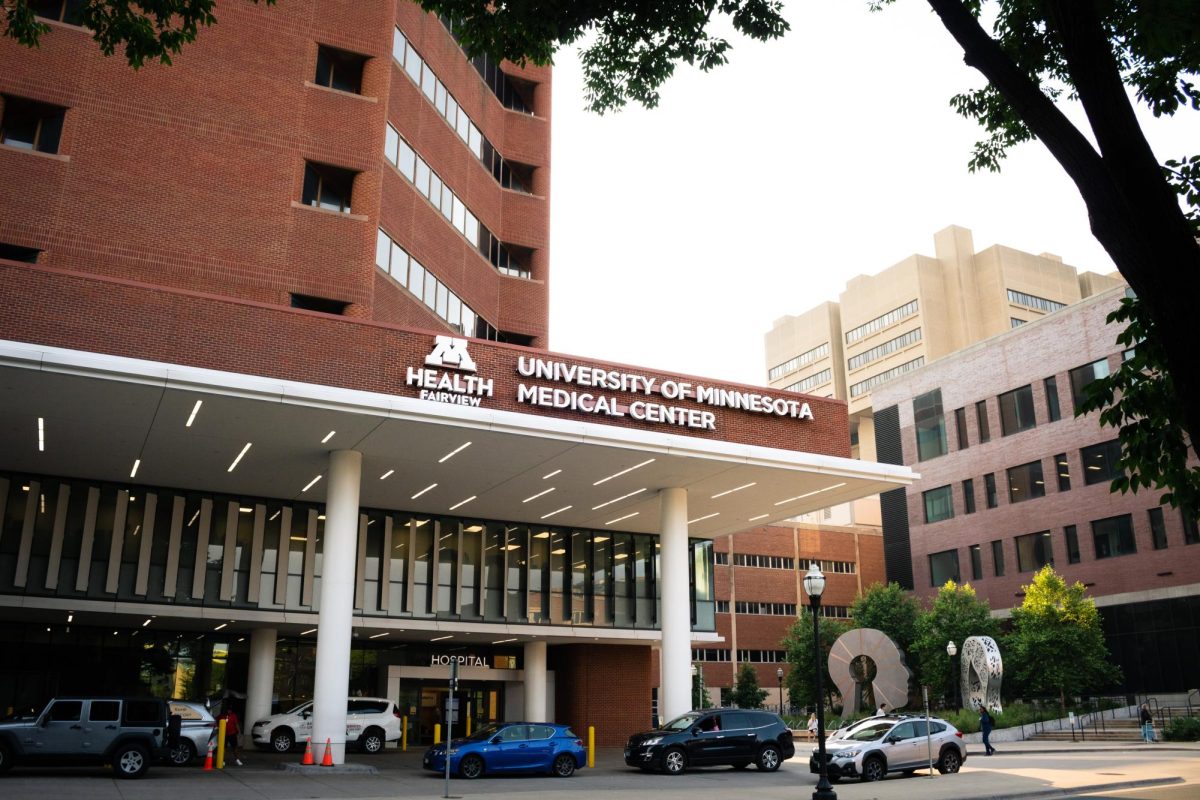The University could soon be sharing the metro area with the state’s third medical school.
Allina Hospitals & Clinics and the University of St. Thomas agreed this month to conduct a feasibility report to determine whether a medical school, focusing on training primary care doctors, would be a good fit.
Minnesota currently has two medical schools: the University of Minnesota’s Twin Cities and Duluth campuses and Rochester’s Mayo Clinic. The proposed school would be built on the site of a former Ford Motor Co. plant located near the University of St. Thomas in St. Paul.
Penny Wheeler, chief clinical officer of Allina Clinics, said the new school would complement the work of the University rather than compete with it.
“If we are not complementing the ‘U’, then we are not completing our goal,” she said.
Wheeler said Minnesota will need more than 80,000 primary care doctors in the next 10 years, and a third medical school could help compensate for an increasing shortage in the field.
– It is projected that by the year 2020, the United States will be short 88,000 physicians.
– A 15 percent increase in United States medical school graduates is needed by 2015 to offset the projected shortfall.
– With only 262 admissions a year currently in Minnesota medical schools, the state ranks lowest in the Midwest in per capita medical school graduates.
This potential shortage is the main reason for a new school, Dr. Thomas Rachon, executive vice president and chief academic officer for St. Thomas, said.
“This is a huge concern. We would not be interested otherwise,” he said.
Primary care would be an important focus, Rachon said, because many University of Minnesota Medical School graduates become specialists, while those who study primary care often leave the state after graduation.
There were 262 graduates of the University’s Medical School last year. Of the 95 primary care graduates, only 45 stayed in the state, Wheeler said.
“Out of 142 resident spots available, there were only 45 from Minnesota, so we needed to recruit residents from other states to fill the open spots,” she said.
Rachon believes Allina has a lot to offer to the new project.
“Allina has a great strength in clinics, facilities and educated doctors,” Rachon said.
Allina’s doctors would serve as the initial primary doctors at the new medical school, Rachon said. He said he had received a few e-mails from St. Thomas students enthusiastic about the possibility of the new facility, although they would not be able to attend.
Sarah Youngerman, spokeswoman for the University’s Academic Health Center, said she does not think a new medical school would have a big impact on the University.
Youngerman said the University’s Medical School admits fewer than 10 percent of applicants. Due to this selectivity, a third medical school would not have an impact on the enrollment of the school. Similarly, she said the new medical school would not greatly affect the patient load at Fairview-University Medical Center.
Youngerman said the new school’s focus on primary care would be completely different than the University’s focus on research.
While current University students have different opinions about the possibility of a third medical school, some think it will make a difference. Duluth medical student Ryan Fader said he supports the project.
“I believe that it would only add to the quality of medical education that is provided in Minnesota and has the potential to provide more physicians for the state, which is clearly underserved in some areas,” he said.
University medical student Christina Bye, who recently completed her undergraduate studies at St. Thomas, said a new medical school would provide a different focus for medical education in the state.
“It would be good to have another theory of educating future physicians,” Bye said. “A new medical school would keep doctors in the state.”
Still, Bye said the state needs more residency positions and jobs to keep graduates in Minnesota.
University biology sophomore Becky Baker said she would rather attend an established medical school, like the University’s, since potential employers take that into consideration.
“I would not apply for the St. Thomas medical school because it would not have a prestigious reputation,” she said.
Officials will decide the future of the potential medical school in October after the completion of the feasibility report, expected to begin this summer. This fall, outside researchers will continue evaluation following the report’s findings, Wheeler said.
She said St. Thomas and Allina will assess the need for a third school, its mission, focus, financial concerns and curriculum.
“This is an exciting prospect. The feasibility report will show if it will be affordable or not,” Rachon said.







